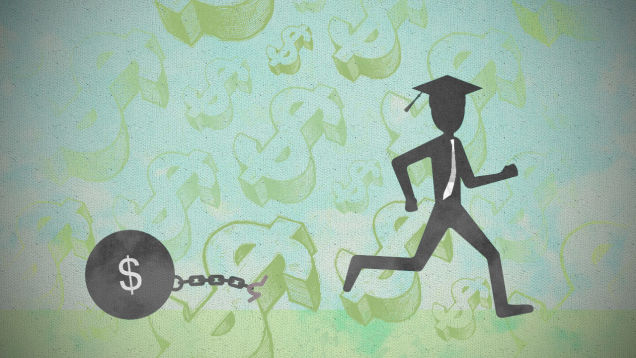Defaulting on student loans is a serious matter that deserves a lot of consideration. Before you begin applying for student loans, it’s wise to learn more about the consequences of default, how to avoid it and, if you’re already in default, how to get out of it. With many young graduates carrying anywhere from thousands to hundreds of thousands of dollars in student loan debt, students are currently facing a mountain of a financial challenge. On top of already high numbers, student loan debt is a sticky kind of debt, as in it stays with the borrower or cosigner no matter what. If you’re worried about defaulting on your student loan repayment, one thing you might want to explore is how you could refinance your loan with someone like SoFi as you could get much better rates, meaning you won’t be paying as much as you perhaps currently are. If you need to postpone paying back loans for the time being, however, two options available for this are deferments and forbearances. If there is a possibility that student loan default can’t be avoided than ask your lender whether you are eligible for rehabilitation before you default.
Who is Responsible?
The responsibility of paying back the loan amount lies with the student himself even if he does not graduate, or having trouble finding a job after graduation, or just didn’t like grad school. If the payment of federal student loans is not made for 270-360 days and no special arrangements with the lender are in place for deferment or forbearance, loans will be in default. This will not go well with your credit report and it will be immensely difficult for a student to acquire further loans. But in some cases a cosigner, may be a parent, could also be held responsible in case of his child’s default.
What will happen?
If student loans are at a default than the borrower has to face some consequences such as,
- Loans may be turned to a collection agency
- Additional liability of costs associated with collection of loans such as attorney fees etc.
- Legal proceedings for the entire amount of loan.
- Wage garnishment.
- Federal and state income tax refunds may be intercepted.
- The federal government may withhold part of Social Security benefit payments.
- Defaulted loan appears on the credit history for up to 7 years.
- Ineligibility for deferments.
- Non-renewal a professional license you hold.
- Subsidized interest benefits will be denied.
- Any further financial aid will not be provided until the loan is paid in full or arrangements to repay already owed amount.
- Ineligibility for assistance under most federal benefit programs.
And of course, you will still owe the full amount of loan.
Bankruptcy is not a Good Option:
Note that student loans are now generally not dischargeable through bankruptcy. It is fairly difficult to satisfy the requirements for an undue hardship petition. Even if you satisfy the requirements of an undue hardship discharge, often this will result in just a partial discharge of the debt. The Bankruptcy Abuse Prevention and the Consumer Protection Act makes discharging loans through bankruptcy virtually impossible. This lack of bankruptcy protection for consumers results in a risk-free loan for creditors, removing pressure on creditors to negotiate lower payments.
What to do, then?
Two options available for postponing repayment of your student loans are deferments and forbearances. If there is a possibility that student loan default can’t be avoided than ask your lender whether you are eligible for rehabilitation before you default.
Deferments allow students to postpone repaying the principal of the loan for a specific period of time. Most federal loan programs allow students to defer their loans while they are in school at least half time. For Perkins Loans and Subsidized Stafford Loans, no interest accrues during the deferment period because the federal government pays the interest. Students can postpone the interest payments on such loans by capitalizing the interest, which increases the size of the loan. Deferments are commonly granted for students who are enrolled in undergraduate or graduate school, disabled students who are participating in a rehabilitation training program, unemployment and economic hardship. Deferments are not granted automatically. You must submit an application and provide documentation to support your request for a deferment. Do not stop making payments on your student loans until after you are notified that your deferment has been granted.
Forbearances allow borrower to postpone or reduce your payments, but the interest charges continue to accrue. One must continue paying the interest charges during the forbearance period. They are typically granted in 12-month intervals for up to three years. An application must be submitted and provided to support the request for a deferment. Forbearances are granted at the lender’s discretion, usually in cases of extreme financial hardship or other unusual circumstances when the borrower does not qualify for a deferment. Do not stop making payments on your student loans until after you are notified that your forbearance has been granted.












No Comments
Leave a comment Cancel